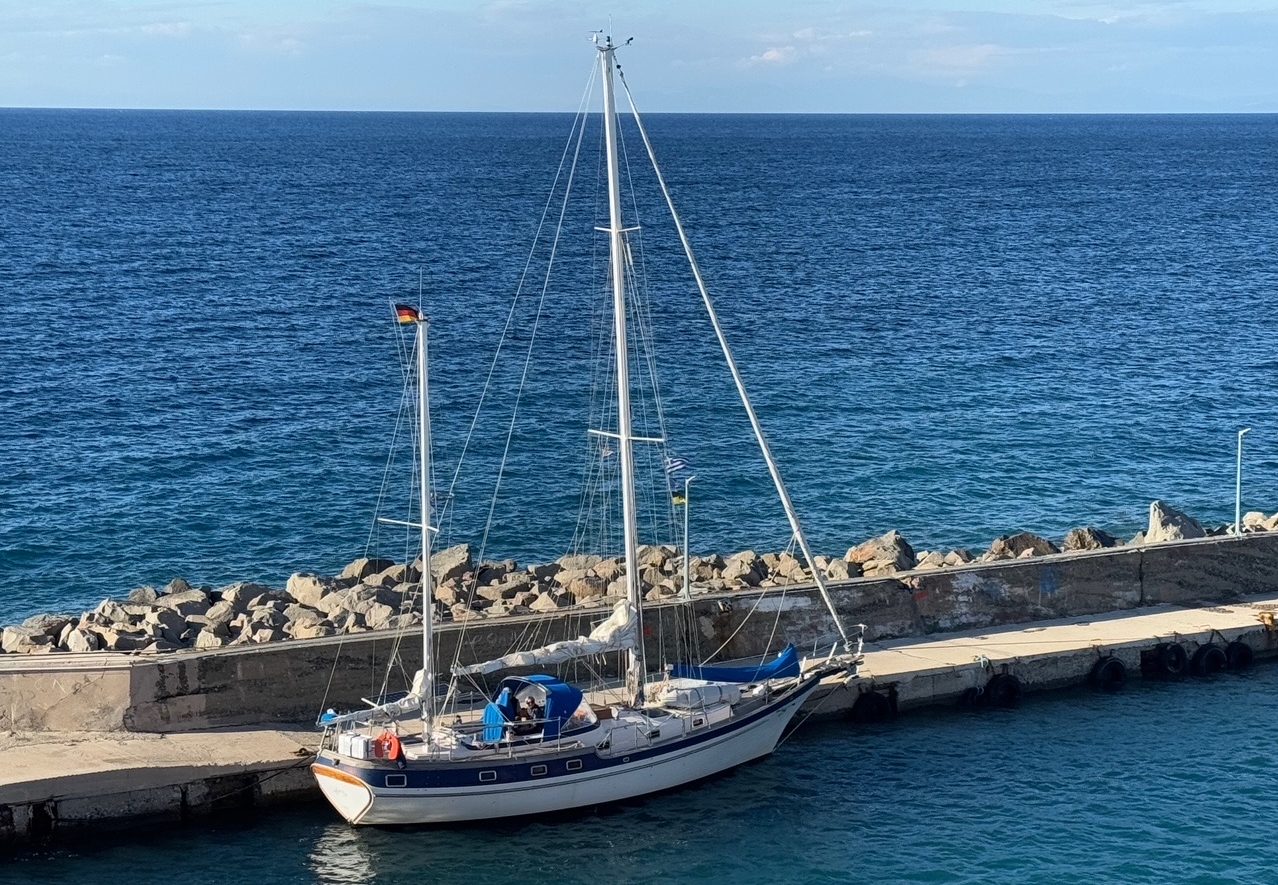
‘Halkidiki, that's the peninsula with the three fingers’, as many people know. On our way to Thessaloniki, we made a detour there after our tour to Mount Olympus. We needed a sheltered spot for the next few days, as strong winds, rain and thunderstorms were forecasted. Firstly, we had a quiet night at anchor on the west side of the westernmost finger (Kassandra). The sandy beach at Cape Posidi juts out into the sea like a golden horn. Great for swimming in the clear turquoise water. And great for stargazing. We were also able to marvel at the Milky Way.

By the way, there are now three of us. As in the last two years, our friend and sailor Claudia has come on board. A nice change. She stays until we reach Thessaloniki.
The next day, we weren't the only ones seeking refuge from the forecasted weather in the beautiful natural harbour of Koufós in the south-west of the middle finger (Sithonía). The bay was full of anchored boats and more were still arriving. We had a bit of trouble finding a good anchorage, especially as the bay is very deep in the centre and very shallow at the edges. But it worked out with almost 80 metres of anchor chain. We stayed there safely for two days. We hardly noticed anything of the heavy weather there. A great place, we'll definitely come back here in autumn on our way east.

We moored in the small harbour of Nea Skioni for the next two days. A nice place. Here we were able to stock up on food again, go for a swim on the crowded beach and take a shower. To give our legs something to do, we went on a hike across the peninsula. At the top of the pass, we could see the sea on both sides.



Then we headed back, past the Golden Horn. We had a short anchor stop there, which then became a little longer as our engine didn't start again at first. The search for the cause yielded nothing. After some waiting time, however, our Nanni started purring again.
We motored to Sani on the west side of Kassandra in zero wind. There is a luxury marina and a large hotel complex. The mooring fee for one night for our boat would be just under 100 euros. We'd rather spend the money on delicious fish and wine. So we anchor again. Three delicious sea bream were served for dinner.


Today we arrived in the large industrial and fishing harbour of Nea Moudaniá. Let's see what is to discover here.



























































































































